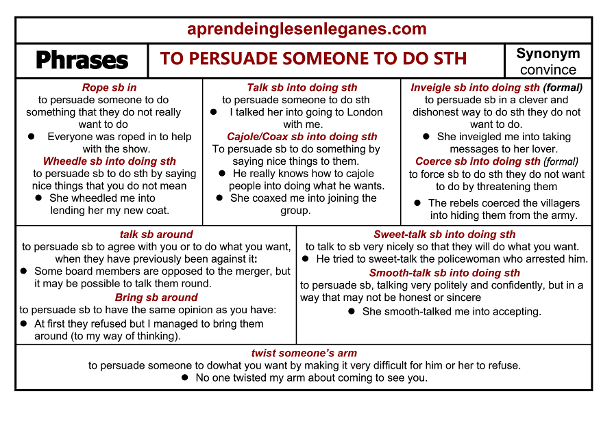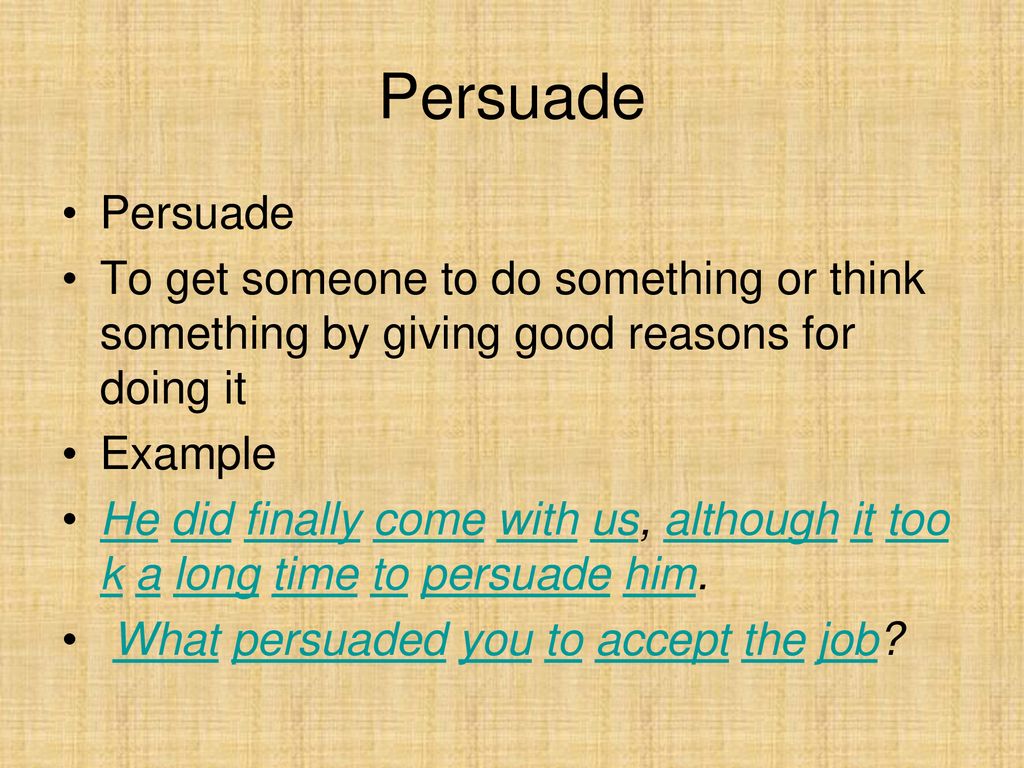How To Convince Somebody To Do Something

In a world saturated with information and brimming with individual perspectives, the ability to effectively persuade someone to embrace a new idea, take a specific action, or shift their viewpoint has become an invaluable skill. Whether it's convincing a colleague to adopt a more efficient workflow, influencing a family member to prioritize their health, or simply negotiating a mutually beneficial agreement, understanding the nuances of persuasion is crucial for navigating both professional and personal landscapes. The key lies not in manipulation, but in fostering genuine understanding, building trust, and crafting compelling arguments rooted in logic, emotion, and shared values.
The art of persuasion, at its core, involves understanding the audience's motivations, addressing their concerns, and presenting a clear, compelling case that resonates with their individual needs and beliefs. This isn't about coercion; instead, it's about collaborative problem-solving and finding common ground. Effective persuasion relies on a combination of psychological principles, communication strategies, and ethical considerations. Mastering this skill requires careful preparation, active listening, and a commitment to respectful dialogue.
Understanding Your Audience
Before attempting to persuade anyone, thorough preparation is essential. This begins with understanding your audience – their values, beliefs, and existing biases.
Empathy plays a critical role in this process; try to see the world from their perspective. Consider what motivates them, what challenges they face, and what they stand to gain or lose by adopting your proposed course of action.
According to social psychologist Robert Cialdini, author of "Influence: The Psychology of Persuasion," understanding the six key principles of influence – reciprocity, scarcity, authority, consistency, liking, and consensus – can significantly enhance your persuasive abilities.
Building Trust and Rapport
Trust is the bedrock of effective persuasion. People are more likely to be receptive to your ideas if they perceive you as credible, sincere, and empathetic.
Building rapport involves establishing a connection with your audience through active listening, genuine interest, and shared experiences. Find common ground, ask open-ended questions, and demonstrate that you value their opinions, even if you disagree with them.
Nonverbal communication also plays a crucial role. Maintain eye contact, use open body language, and speak clearly and confidently. A study published in the Journal of Personality and Social Psychology found that people who are perceived as warm and approachable are more persuasive than those who are seen as cold and distant.
Crafting a Compelling Argument
Once you've established a foundation of trust, you can begin to present your argument. This should be done in a clear, concise, and logical manner.
Support your claims with evidence, data, and credible sources. Avoid using jargon or overly technical language that might alienate your audience. Instead, focus on communicating your message in a way that is easy to understand and relatable.
Consider framing your argument in terms of the benefits it will provide to the other person. Highlight the ways in which your proposal will help them achieve their goals, solve their problems, or improve their lives.
Appealing to Emotion and Logic
While logic is essential, emotions often play a significant role in decision-making. A balanced approach that appeals to both the rational and emotional sides of the brain is often the most effective.
Use storytelling, anecdotes, and vivid language to evoke emotions and create a personal connection with your audience. However, be careful not to manipulate or exploit emotions; instead, focus on using them to highlight the importance and relevance of your message.
The Yale Attitude Change Approach, developed by psychologist Carl Hovland, emphasizes the importance of considering the communicator's credibility, the message's content, and the audience's characteristics when attempting to persuade someone.
Addressing Objections and Concerns
Anticipate and address potential objections before they are raised. This demonstrates that you have carefully considered the issue from all angles and that you are prepared to address any concerns.
When responding to objections, remain calm, respectful, and open-minded. Avoid becoming defensive or dismissive; instead, acknowledge the validity of the other person's concerns and offer thoughtful and constructive solutions.
Turn objections into opportunities to strengthen your argument and demonstrate your understanding of the other person's perspective. A Harvard Business Review article highlighted that successful negotiators often reframe objections as questions to better understand the underlying needs and concerns.
Following Up and Reinforcing Your Message
Persuasion is often a process, not a one-time event. After presenting your argument, follow up with the other person to reinforce your message and address any lingering questions or concerns.
Provide additional information, resources, or support to help them make an informed decision. Be patient and persistent, but also respect their right to make their own choices.
Ultimately, successful persuasion is about building relationships, fostering understanding, and working together to achieve mutually beneficial outcomes.
The ability to persuade effectively is a skill that can be honed and refined over time. By understanding the principles of influence, building trust, crafting compelling arguments, and addressing objections with empathy and respect, individuals can become more successful in their personal and professional endeavors. The future of communication lies in fostering genuine connections and collaborative problem-solving, making the art of persuasion more relevant than ever before.









+something%2C+or+to+buy+an+item+or+service.jpg)







